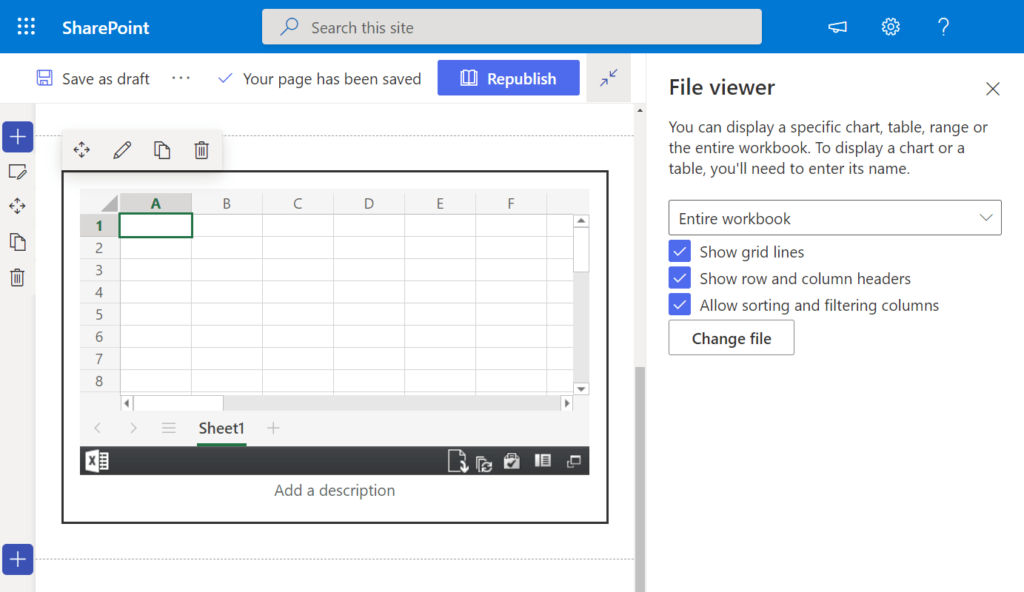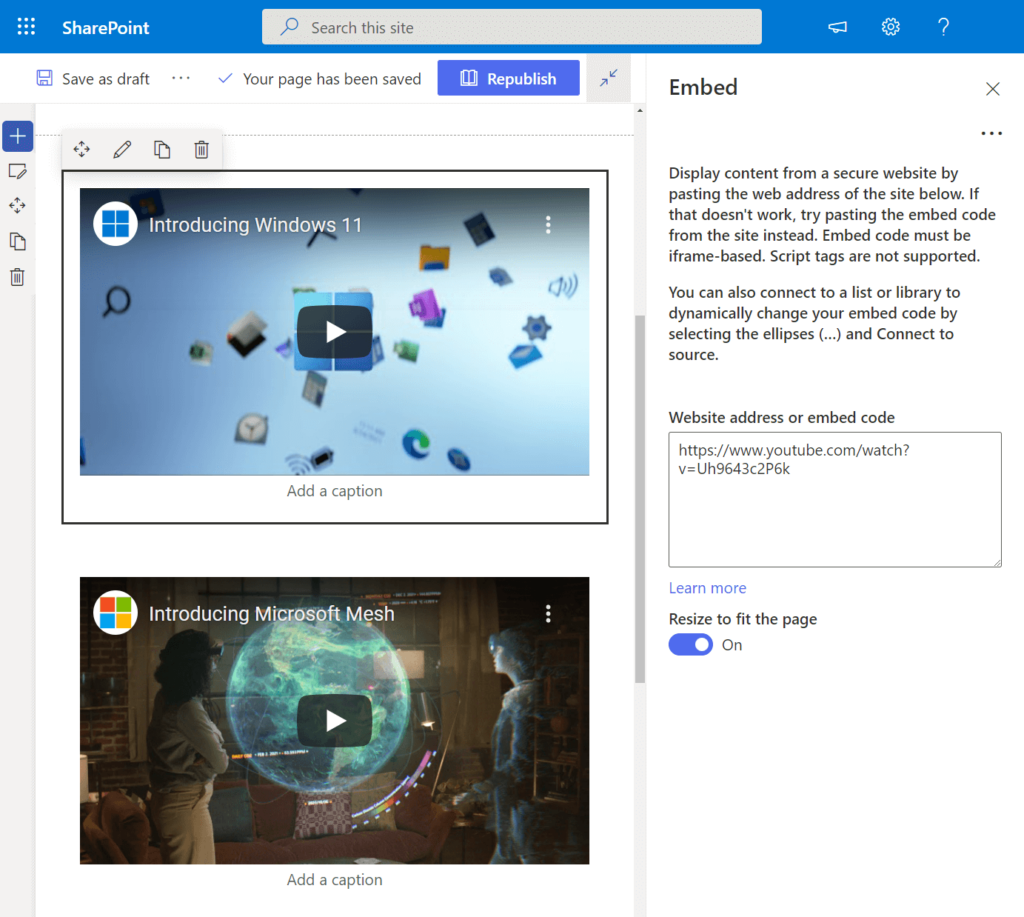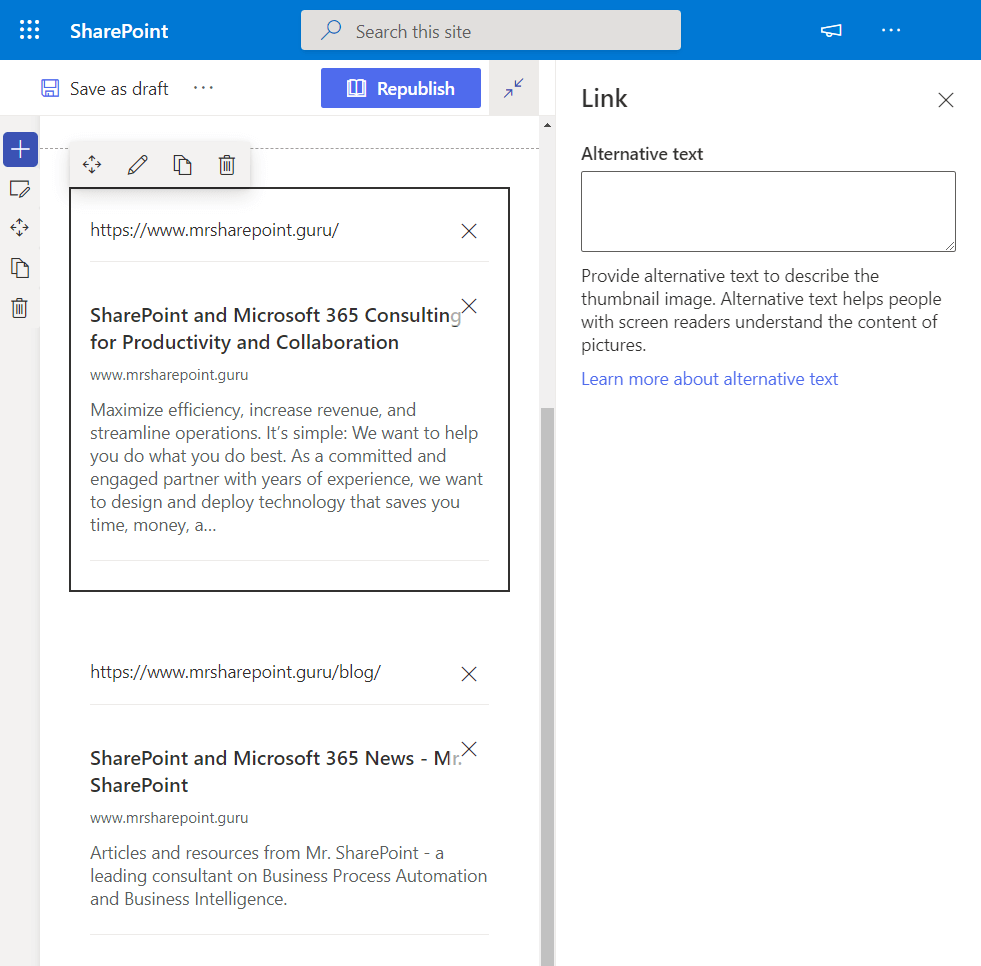Last Updated on December 16, 2024
Can’t find this web part?
In this guide, let’s talk about the alternatives to the SharePoint page viewer web part in the modern experience.
Let’s get started.
Table of Contents:
What is the page viewer web part?
As its name suggests, this web part displays web pages, documents, or folders within a SharePoint page.
Basically, you can use it to embed content from external sources without having to leave SharePoint.

This was widely used in the classic experience as it’s something like a “catch-all” embed web part.
It’s no longer available in the modern experience as there are specialized embedding web parts available.
Sign up for exclusive updates, tips, and strategies
The modern experience is one of the best things that happened to SharePoint.
Unfortunately, it also brings out some challenges like:
- Missing web parts
- Limited customization
- Learning curve
One of the biggest issues is the lack of a direct replacement for certain classic web parts.
Modern web parts are designed for simplicity and responsiveness but may not fully support complex setups.
On the bright side, modern web parts are easier and more intuitive to use. 🙂
👉 Related: Online SharePoint Modern Experience: Introductory Guide
Alternative Web Parts to Recreate the Page Viewer Experience
Since this web page viewer isn’t available in the classic experience, you need to use alternative web parts.
The good news here is that there are several options available:
1. File Viewer Web Part
The file viewer part allows you to display different types of files directly on the SharePoint site page.

Here’s what you can show:
- Documents (office files and PDF files)
- Media files (plays video and audio)
- 3D models
It’s ideal if you want to integrate rich content into your site.
What’s nice is that users can interact with content without downloading what you embedded.
2. Embed Web Part
The embed web part allows you to display external content by embedding it directly into the page.

Here’s what you can embed:
- Web pages
- Videos (like YouTube or Vimeo)
- Custom content (iframe-based)
I recommend this one if you want to integrate external resources like videos or interactive content.
But take note that it only supports iframe-based embeds, and some sites may restrict embedding.
👉 Related: How to Use iFrame in SharePoint Online (Beginner’s Guide)
3. Link Web Part
From the name itself, this one allows you to add and display external links with a preview.

It can display:
- Web links
- Document links (shows thumbnail and description)
- Video links (with preview image)
It’s a good way to share content quickly while providing users with a visual preview, though not technically embedding it.
You can practically link to any resources, and SharePoint will automatically generate a preview when available.
You can read more about the different web parts available in modern SharePoint in another guide that I wrote. 🙂
👉 Related: Modern SharePoint Web Parts: List of All Available Web Parts
Using SPFx Web Parts for More Flexibility
If you want more flexibility, your other option is to use SharePoint Framework (SPFx).
You can recreate custom web parts, including their look and functionality while fitting seamlessly into modern pages.
Unfortunately, it’s not something that you can do right away unless you know client-side SharePoint development.
👉 Related: What Is SharePoint Development: Key Components and Practices
Anyway, got any questions about the page view web part in SharePoint? Let me know below.
For any business-related queries or concerns, contact me through the contact form. I always reply. 🙂

